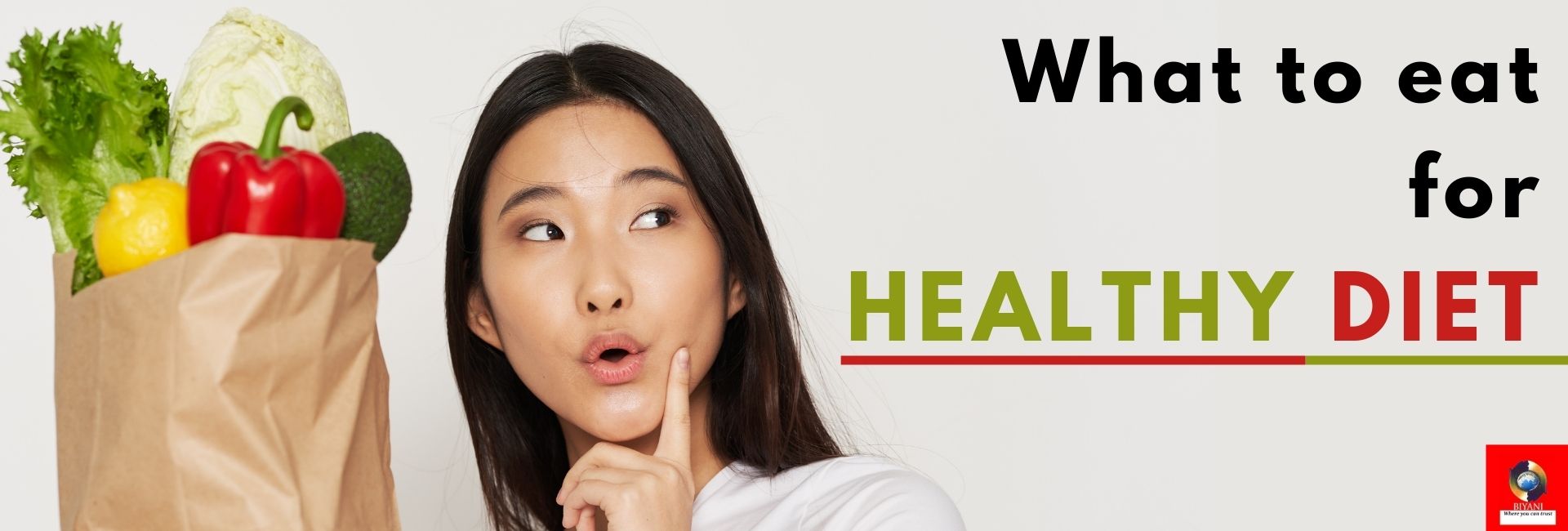Introduction
Hello there, I hope you’re doing good. In this blog, you’ll read about ‘what to eat for healthy diet’. Firstly, we’ll discuss the importance of a healthy diet & WHO response to it. Further, you’ll get to know about a healthy diet for infants, young children, and adults.
Let’s get started….
Importance of a healthy diet
A Balanced diet is important for preventing malnutrition in all its manifestations, as well as a variety of noncommunicable diseases (NCDs) like diabetes, heart disease, and disorders. However, dietary patterns have changed as a result of the increased manufacturing of processed foods, rapid urbanization, and changing lifestyles. People are eating more foods heavy in energy, fats, free sugars, and salt/sodium, and many people aren’t getting enough fruit, vegetables, and other dietary fibre like whole grains.
A weight-management eating plan should include a range of healthful meals. Think of it as eating the rainbow by putting a rainbow of colours on your plate. Vitamins, fibre, and minerals abound in dark, leafy greens, oranges, and tomatoes, as well as fresh herbs. Frozen peppers, broccoli, and onions can be added to stews and omelettes for a quick burst of colour and nutrients.
Individual attributes (e.g., age, gender, lifestyle, and level of physical activity), cultural background, locally accessible foods, and dietary practices will all influence the composition of a diversified, balanced, and nutritious diet. The fundamental concepts of what defines a healthy diet, however, remain the same.
WHO response to healthy diet
The World Health Assembly accepted the “World Health Organization Global Strategy on Diet, Physical Activity, and Health” (14) in 2004. The strategy urged governments, the World Health Organization, international partners, the commercial sector, and civil society to support healthy diets and physical activity on a global, regional, and local level.
The United Nations General Assembly adopted a “Comprehensive Implementation Plan on Maternal, Infant, and Young Child Nutrition” in 2012, as well as six global nutrition goals to be met by 2025, including reducing stunting, wasting, and overweight in children, improving breastfeeding and reducing anaemia and low birth weight. In 2013, the United Nations General Assembly adopted nine worldwide voluntary targets for the prevention and control of noncommunicable diseases (NCDs). By 2025, these goals include a 30 percent reduction in salt intake and a halt to the rise in diabetes and obesity.
The “Global Action Plan for the Prevention and Control of Noncommunicable Diseases 2013–2020” provides the Member States, WHO, and other UN organizations with guidance and policy alternatives for achieving the goals.
Download Guru KPO Plus App for online learning
What to eat for a healthy diet
For infants and young children
An optimal diet promotes healthy growth and cognitive development in children during their first two years of life. It also lowers the chances of becoming overweight or obese later in life, as well as the development of NCDs.
The following ingredients are also crucial for infants and children when it comes to a balanced diet:
During the first six months of life, infants should be entirely breastfed. Breastfeeding should be continued until the child is at least 2 years old. Breast milk should be supplemented with a variety of appropriate, safe, and nutrient-dense foods starting at the age of six months. Salt and sugar should not be added to foods that are already salty or sweet.
For adults
Fruit, vegetables, legumes (such as lentils and beans), nuts, and whole grains are all good sources of vitamins and minerals (e.g. unprocessed maize, millet, oats, wheat, and brown rice). A minimum of four hundred g (five servings) of fruit and vegetables per day.
Less than ten percent of total energy intake from free sugars, which is similar to fifty grams (or about twelve level teaspoons) for a healthy body weight consuming roughly two thousand calories per day, but ideally less than five percent of total energy intake for added health advantages.
Fruits can be bought fresh, frozen, or tinned. Mango, pineapple, or kiwi fruit are some alternatives to apples and bananas. Try a frozen, canned, or dried fruit when fresh fruit isn’t available. Keep in mind that dried and canned fruit may include sugars or syrups that have been added. Choose fruit that is canned in its own juice or in water.
Likewise, the best thing you can do for your diet is to eat healthily. It is essential for optimum health and can help to prevent a variety of chronic illnesses. It also aids in weight management and provides you with more energy to enjoy your life.
Why is it important to eat healthily?
It is beneficial to us in a variety of ways. Not only does eating well affect our physical health, but it also has an impact on our emotional well-being. We lower our risk of disease by eating nutritious fruits and vegetables. Green vegetables, for example, aid in the preservation of strength and vitality.
The idea is to eat them in moderation and to balance them with healthier foods and more physical exercise.
Blog by: Ms. Rashmi Khandelwal and Ms. Anisha Sharma
Department of Science (Zoology)
Biyani Group of Colleges, Jaipur
Thank you for reading the blog. Kindly, share it with all your friends & family. As a healthy diet is necessary for everyone.
Keep Reading. Keep Sharing.

